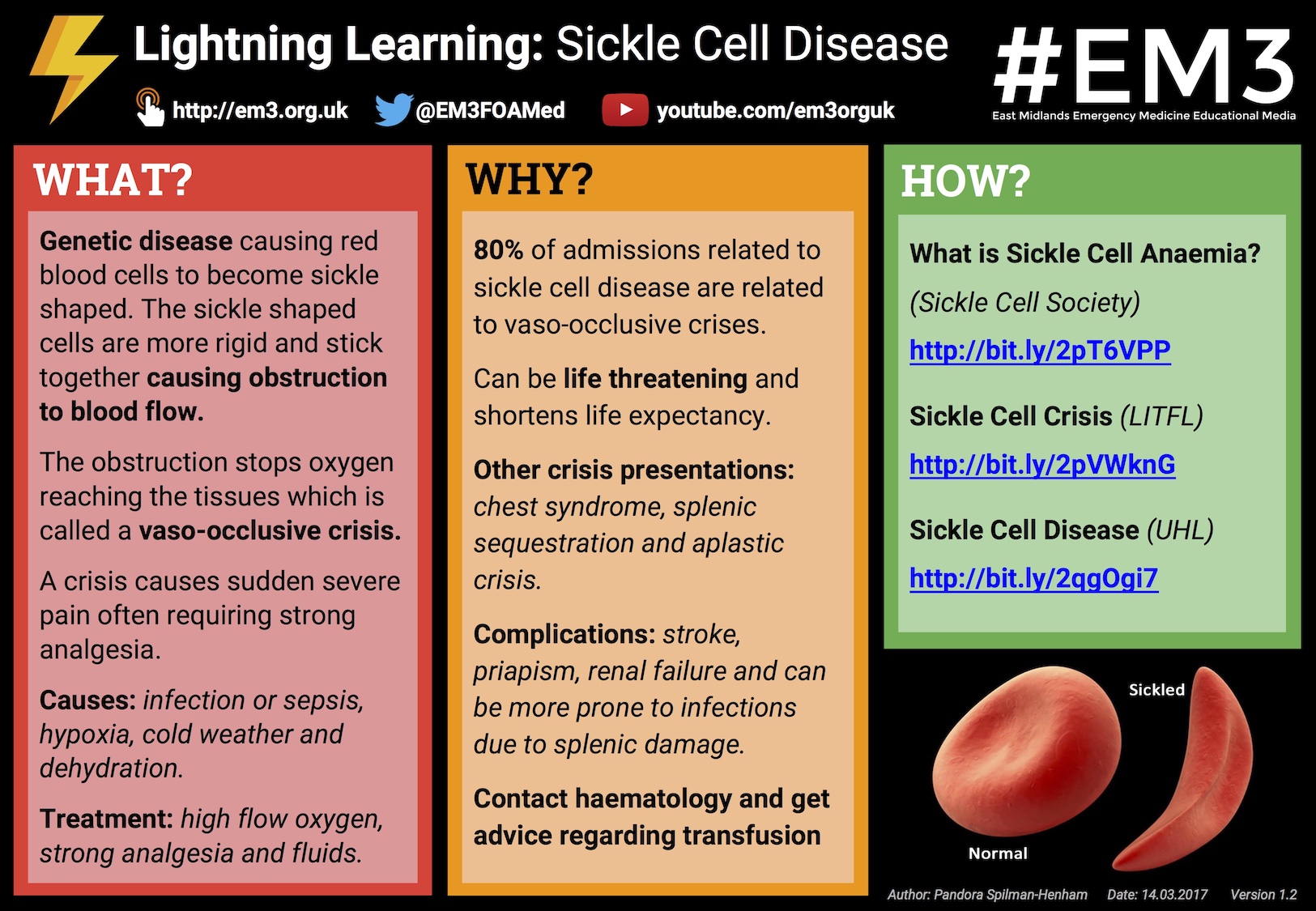Lightning Learning: Sickle Cell Disease
“80% of admissions relating to sickle cell disease are also related to vaso-occlusive crises. Not only shortening life expectancy but potentially life-threatening.”
What?
Sickle Cell disease is a genetic disease that causes red blood cells to become sickle-shaped. The sickle-shaped cells are more rigid and stick together causing obstruction to blood flow.
The obstruction stops oxygen reaching the tissues which is called a vaso-occlusive crisis. A crisis causes sudden severe pain often requiring strong analgesia.
Causes: infection or sepsis, hypoxia, cold weather and dehydration
Treatment: high flow oxygen, strong analgesia and fluids
Why?
80% of admissions related to sickle cell disease are related to vaso-occlusive crises. Can be life-threatening and shortens life expectancy. Contact haematology and get advice regarding transfusion.
Other crisis presentations: chest syndrome, splenic sequestration and aplastic crisis.
Complications: stroke, priapism, renal failure and can be more prone to infections due to splenic damage.
Further Reading
- Sickle Cell Society: What is Sickle Cell Anaemia?
- Life in the Fast Lane: Sickle Cell Crisis
- UHL Haematology guideline: Sickle Cell Disease
- Radiopaedia: Sickle Cell Disease








